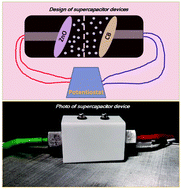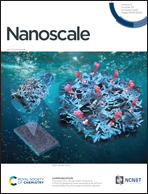Tailoring morphology to control defect structures in ZnO electrodes for high-performance supercapacitor devices
Abstract
Zinc oxide (ZnO) nanostructures were synthesized in the form of nanoparticles, nanoflowers and nanourchins. Structural, electronic and optical characterization of the samples was performed via standard techniques such as X-ray diffraction (XRD), scanning electron microscopy (SEM), photoluminescence, Raman and ultraviolet-visible (UV-Vis) spectroscopy. Point defect structures which are specific to each morphology have been investigated in terms of their concentration and location via state-of-the-art electron paramagnetic resonance (EPR) spectroscopy. According to the core–shell model, all the samples revealed core defects; however, the defects on the surface are smeared out. Finally, all three morphologies have been tested as electrode materials in a real supercapacitor device and the performance of the device, in particular, the specific capacitance and the storage mechanism, has been mediated by the point defects. Morphology-dependent defective ZnO electrodes enable the monitoring of the working principle of the supercapacitor device ranging from electric double-layer capacitors (EDLC) to pseudo-supercapacitors.



 Please wait while we load your content...
Please wait while we load your content...